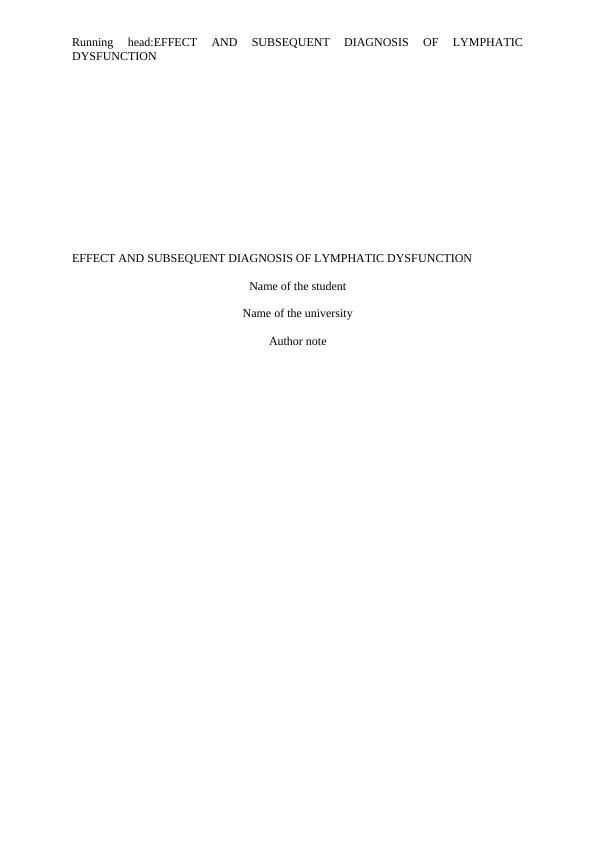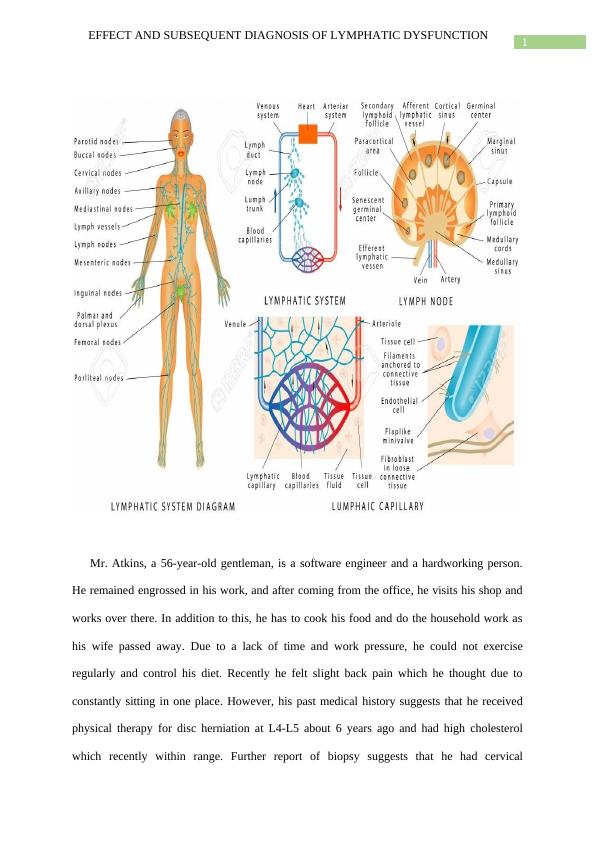EFFECT AND SUBSEQUENT DIAGNOSIS OF LYMPHATIC DYSFUNCTION
8 Pages2140 Words12 Views
Added on 2022-08-29
EFFECT AND SUBSEQUENT DIAGNOSIS OF LYMPHATIC DYSFUNCTION
Added on 2022-08-29
ShareRelated Documents
End of preview
Want to access all the pages? Upload your documents or become a member.
The lymphatic System in Hodgkins Lymphoma
|5
|1688
|19
Cytokines and Chemokines Assignment PDF
|35
|921
|115
The Lymphatic System
|10
|668
|86
Basic Anatomy and Physiology
|7
|1686
|190
Lymph Nodes and Its Function
|4
|766
|212
Report on Principles for Health and Social Care
|16
|5368
|107



